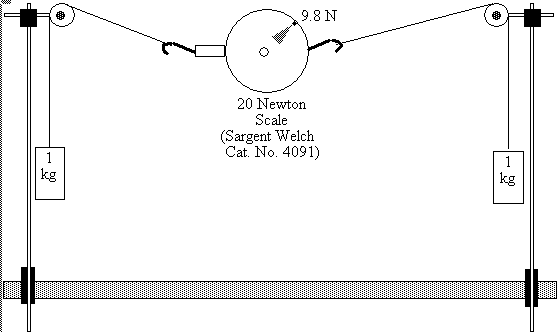What It Shows
The two ends of a dial-type spring balance are each connected to strings which run over pulleys. With equal weights attached to the ends of the strings, the spring balance indicates the value of one of the weights.
How It Works
The demonstration is presented to the class as a puzzler: the spring balance is turned around so that the class can't see the dial. Students are invited to guess what it is reading. Invariably they guess the sum of the two weights. The lecturer then turns the face of the dial gauge around showing them the error of their ways. This naturally leads into a discussion of what it is that the spring balance is measuring—tension.
Setting It Up
The apparatus is assembled from standard lab clamps, bars, pulleys, etc. It is best to preassemble it on a small lecture cart so that it can be set up off to one side and not block the view of the blackboard. Also, it can be quickly moved in and out of the lecture hall if time is an issue. Although slightly different every time, it typically ends up looking something like this:
Comments:
A puzzler is always a fun way of introducing a subject or emphasizing a concept.